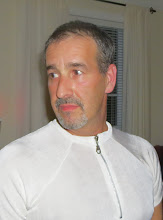
Next up is gemstones. Unlike diamonds, colored gemstones are not graded by clarity or cut. The most important aspects of their pricing is color saturation and carat weight. Quality gemstones are just as rare and can be just expensive as diamonds. Rarity is the factor. Inclusions and flaws, while having an impact on the price to some degree isn't nearly as important as the color itself.
Colored gemstones come in every cut that diamonds do and a few unique cuts as well. Their atomic structure is a bit looser in natures that can allow more carving than cutting in some cases. Think jade or cinnabar. Pieces that contain these specialty cuts or carvings can be very expensive, not just based on the material alone, but also most are cut or carved by master craftsman by hand. They are truly a collaborative effort between man and nature.
Color saturation is the depth and purity of the color. The colors of the rainbow are available in gemstones. Every color is represented by some type of stone. From whites, such as moonstone or opal to black jet. You merely need to decide what appeals to you. With semi precious stones such as ruby, sapphire and emerald, being the most common, certain colors within those will be more sought after or rare escalating the price. Yellow sapphires are pricey. Ceylon sapphires or London blues are pricey even blood red rubies of superior quality can astonish you at their price for a quality stone. There is too much to cover in these post about the many gemstones available to you, so figure out what you are interested in and do some research before heading out to the store. Also note that some gemstone are more fragile than others and none can take the wear and tear that a diamond does and it will show on the stone itself not just the mounting.
Over the years, QVC has brought simulated gemstones to the mainstream. Now every jewelry store has a large inventory to chose from. I want to clarify some of the terms used to describe them. Basically, a simulated stone of any sort is some type of material that by all appearances look like the natural version. The price will be cheaper, there aren't any flaws, and for the most part a casual glance won't distinguish between the two. Lab created stones on the other hand are in every way, identical to a natural. The same process that made them in nature is used in a lab to create them, minus the flaws. They will be priced less than natural stone of the same color and weight but aren't cheaper than a simulated stone. Unless a trained jeweler or a lab does test, most people couldn't tell the difference. They have the same characteristics of the natural including how well they will hold up under wear. A synthetic stone is similar to the simulated stone, but the main difference is the company tries a little harder to match the natural stones characteristics without actually making a lab created stone. Confusing? Most will clump the simulated and synthetic together, and that is a fair assessment. Just remember there is a slight splitting of hairs difference in how it is made. As far as value, a natural quality gemstone, that is unique to nature will always be worth more in the future. Anything massed produced can never be.
A last note on colored gemstones. Some but not all gemstone may have undergone a heating or chemical process of some sort to enhance the color. The two that come to mind are onyx and tanzanite. This is common industry practice for these stone and will never be mentioned for that reason. Other however gemstones such as sapphire or emerald may have been irradiated to enhance the color, this should be mentioned by the salesperson and will be noted on the certificate if accompanied by one. It must be written or expressed by law before the purchase is made. If the price seems to be too good to be true for the quality and size stone you are purchasing, be sure to ask. Another thing to mention is certain stones are filled or patched if you will. Emeralds lead the way because by their nature and make up they contain many flaws that can weaken the stone after being cut. The vendors do this before the piece ever arrives at the store. It by law has to be disclosed. It also good to know this before cleaning the stone or having repair work done so as to not jeopardize the stone in the process. It should be noted on the certificate. Most jewelers will be upfront with customers, very few are disreputable and try to intentionally mislead you, but is is still buyer beware, before spending a lot of money without understanding the product.
(Sorry but for some reason I can't get double spacing between my paragraphs tonight.)




No comments:
Post a Comment